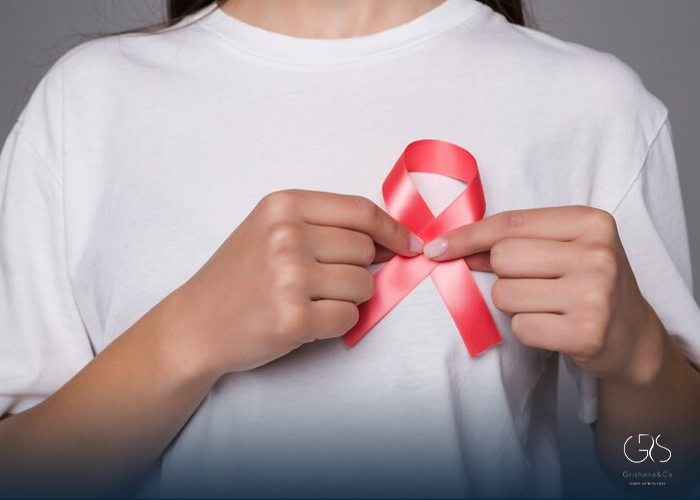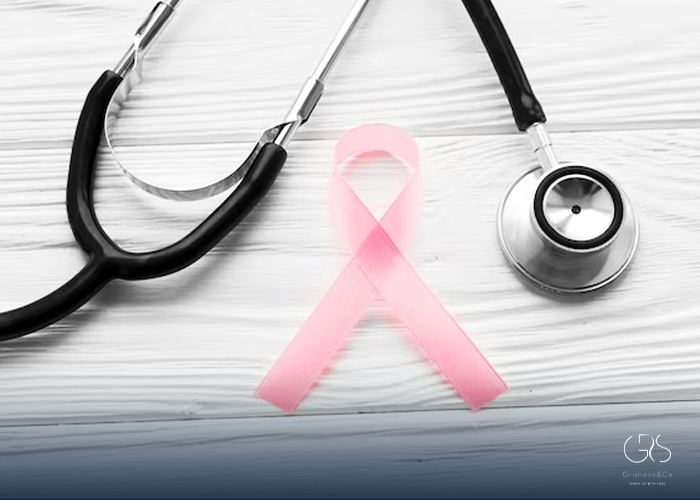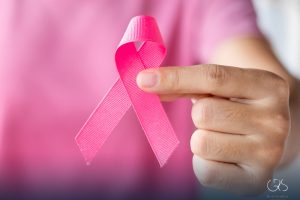Breast cancer is a complex and diverse disease, encompassing various types with distinct characteristics. One such subtype is triple-negative breast cancer (TNBC), which accounts for approximately 10-20% of all breast cancers. TNBC poses unique challenges due to its aggressive nature and limited treatment options. In this comprehensive guide, we will delve into the world of triple-negative breast cancer, exploring its definition, diagnosis, treatment options, and prognosis, while considering diverse perspectives and including relevant statistics.
A. What is Triple Negative Breast Cancer?
Triple-negative breast cancer refers to a subtype of breast cancer where the cancer cells do not have receptors for three major proteins: estrogen receptors (ER), progesterone receptors (PR), and human epidermal growth factor receptor 2 (HER2). These receptors play a crucial role in normal breast cell growth and division, and their absence in triple-negative breast cancer leaves fewer targetable treatment options. TNBC is typically diagnosed based on the absence or low expression of these receptors, confirmed through immunohistochemistry testing.
B. Statistics on Its Prevalence and Significance
Triple-negative breast cancer may disproportionately affect specific populations. For example, studies have shown that African American women are more likely to develop TNBC compared to other ethnic groups. Age also plays a role, with TNBC being more prevalent in younger women. According to the American Cancer Society, about 15-20% of breast cancer cases in women under 40 are triple-negative.
II. Causes and Risk Factors

A. Genetic Predisposition
In some cases, there may be underlying genetic factors that increase the risk of developing triple-negative breast cancer. Mutations in the BRCA1 gene, in particular, have been linked to an increased susceptibility to TNBC. Women with BRCA1 mutations have a higher lifetime risk of developing triple-negative breast cancer, along with ovarian cancer.
B. Reproductive and Hormonal Factors
Reproductive and hormonal factors also play a role in the development of breast cancer, including TNBC. Early age of menstruation, late onset of menopause, and nulliparity (never having given birth) are associated with an increased risk of developing TNBC.
C. Other Potential Risk Factors
Apart from genetic and hormonal factors, various lifestyle and environmental factors may contribute to the development of triple-negative breast cancer. These include obesity, tobacco use, excessive alcohol consumption, and exposure to certain chemicals and radiation. Research into these potential risk factors is ongoing, aiming to uncover the underlying mechanisms and establish preventive measures.
III. Symptoms and Diagnosis

A. Common Symptoms and Signs
Triple-negative breast cancer shares several common symptoms and signs with other types of breast cancer. These may include the presence of a lump or thickening in the breast or armpit, changes in breast size or shape, nipple changes, breast pain, and nipple discharge. It is vital to understand that the presence of these symptoms does not necessarily indicate the presence of triple-negative breast cancer but should prompt immediate medical evaluation.
B. Diagnostic Tests and Approaches
Diagnosing triple-negative breast cancer requires a combination of imaging tests, biopsy, and laboratory analysis. Mammography, ultrasound, and magnetic resonance imaging (MRI) are commonly used to detect and evaluate breast abnormalities. If an abnormality is detected, a biopsy is performed to collect a tissue sample for further analysis. Immunohistochemical testing determines the presence or absence of estrogen receptors, progesterone receptors, and HER2. If these three receptors are lacking or exhibit low expression, a triple-negative breast cancer diagnosis is confirmed.
C. Importance of Early Detection
Early detection plays a crucial role in managing triple-negative breast cancer. Detecting TNBC at an earlier stage increases the likelihood of successful treatment and improved outcomes. Regular breast self-exams, clinical breast exams, and regular mammograms are key components of early detection and should be performed as recommended by medical professionals.
IV. Treatment Options
A. Surgery as a Primary Treatment Strategy
The primary treatment approach for triple-negative breast cancer involves surgery to remove the tumor. This can be in the form of a lumpectomy, where only the tumor and a small portion of surrounding tissue are removed, or a mastectomy, which involves the removal of the entire breast. Lymph node removal may also be performed to determine if the cancer has spread to nearby lymph nodes.
B. Chemotherapy and Radiation Therapy
Chemotherapy is a critical component of treatment for triple-negative breast cancer. Due to the absence of targetable receptors, hormone therapies (such as those used for ER- or PR-positive breast cancer) are not effective. Chemotherapy drugs are used to kill cancer cells throughout the body, reducing the risk of cancer recurrence.
Radiation therapy may also be recommended for TNBC patients, particularly after a lumpectomy. Radiation therapy uses targeted high-energy X-rays to destroy any remaining cancer cells in the breast tissue.
C. Emerging Treatments and Clinical Trials
Research and clinical trials are ongoing to explore new treatment options for triple-negative breast cancer. Various novel therapies, such as immunotherapy and targeted therapies, are being investigated with the aim of providing more effective and tailored treatment options. Participation in clinical trials can offer patients the opportunity to access potentially groundbreaking treatments that are still under development.
V. Prognosis and Survival Rates
A. Factors Affecting Prognosis
Prognosis and survival rates for triple-negative breast cancer are influenced by several factors. These include the stage of cancer at diagnosis, tumor size, lymph node involvement, and the grade of cancer cells. Additionally, younger age and lack of response to initial treatment may negatively impact prognosis.
B. Survival Rates and Long-Term Outcomes
Triple-negative breast cancer carries a higher risk of recurrence and poorer prognosis compared to other breast cancer subtypes. However, it is important to note that survival rates and long-term outcomes can vary depending on the stage at diagnosis and the effectiveness of treatment. The five-year survival rate for TNBC ranges from 77% for early-stage tumors to around 11% for advanced-stage tumors.
VI. Support and Resources

A. Support Networks and Organizations
Dealing with a triple-negative breast cancer diagnosis can be emotionally challenging. However, there are numerous support networks and organizations available, offering valuable resources, counseling, and assistance. Organizations like the Triple Negative Breast Cancer Foundation and Susan G. Komen provide support, promote awareness, and facilitate research initiatives.
B. Coping Strategies and Emotional Support for Patients and Families
Patients and their loved ones may benefit from various coping strategies and emotional support during the journey with triple-negative breast cancer. Seeking support from friends, family, support groups, and mental health professionals can help patients navigate the emotional and psychological challenges that may arise.
VII. Current Research and Advances
A. Promising Breakthroughs in Triple-Negative Breast Cancer Research
Research efforts are ongoing to find innovative ways to combat triple-negative breast cancer. One of the significant breakthroughs in recent years has been the emergence of immunotherapy as a potential treatment option. Several clinical trials are exploring the effectiveness of immunotherapies that harness the power of the immune system to selectively target and eliminate cancer cells.
B. Future Directions and Potential Therapies
The future outlook for triple-negative breast cancer holds promise, with researchers continuing to explore new treatment options and molecular targets. Advances in genetics, targeted therapies, and personalized medicine may pave the way for more effective and tailored treatments for TNBC patients.
VIII. Conclusion
Triple-negative breast cancer remains a formidable challenge in the world of breast cancer. Its unique characteristics and limited treatment options necessitate a comprehensive understanding of this aggressive disease. By providing an overview of triple-negative breast cancer, including its definition, diagnosis, treatment options, prognosis, and relevant statistics, this article aims to empower individuals with knowledge and promote awareness.
Remember, early detection, education, and support play crucial roles in combating triple-negative breast cancer. By staying informed and supporting ongoing research efforts, we can strive toward improved outcomes and a brighter future for those affected by this challenging disease.
Sources
- American Cancer Society, Triple-negative Breast Cancer
- Centers for Disease Control and Prevention, Triple-Negative Breast Cancer
- Breastcancer.org, Triple-Negative Breast Cancer: Treatment and Prognosis
- Penn Medicine, Triple Negative Breast Cancer (TNBC)
- Cleveland Clinic, Triple-Negative Breast Cancer: Symptoms and Treatment
- Cancer Research UK, Triple Negative Breast Cancer
- tnbcfoundation.org, Triple Negative Breast Cancer Foundation
- Susan G. Komen, Triple Negative Breast Cancer





